Cynthia Minet
All images courtesy of the artist. Photos by Martin Cox.

Can the issues of plastic in our oceans and on land be engaged in a visual and non-didactic format? Can artworks made from trash become something beautiful while retaining their critical position? I grapple with these questions in my sculptures, installations and drawings. Since 2009, I have been working on a series I call “Unsustainable Creatures”, life-size pieces based on domesticated animals. With these sculptures and installations I draw a parallel to human domestication – our jobs, our life-style, our dependence on petrochemicals and electricity. I intend the work to have multiple readings, communicating to audiences through the use of humor, light, and recognizable materials.

My sculptures are constructed from found and repurposed plastics, and illuminated with LEDs. At first glance, viewers encounter the animal in its entirety. On closer inspection, they begin to identify the elements from which the sculpture is assembled—translucent water containers, detergent bottles, computer parts, baby bathtubs, etc. with which we have a utilitarian relationship in our everyday lives, but rarely stop to consider at length.

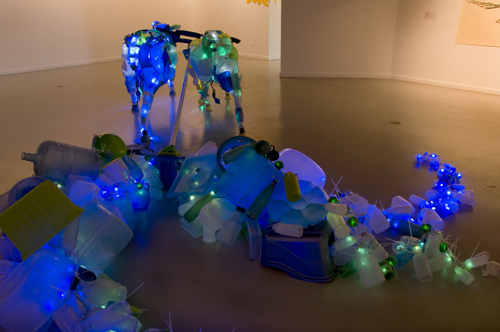
The environmentalist message of “reduce, re-use, recycle” is inherent and exploited in the discarded pieces I use to make the work. When repurposed as anatomical parts of these animals, the viewer can engage with these materials with a new awareness. Visible on the forms of the sculptures are the wires that link the LEDs; their lines suggestive of contour drawings while emphasizing their electric charge.
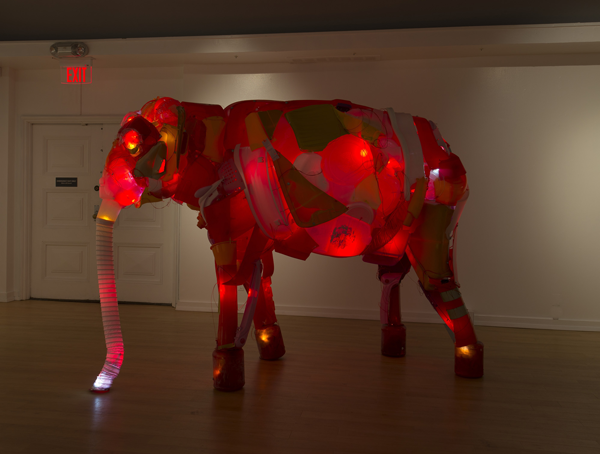
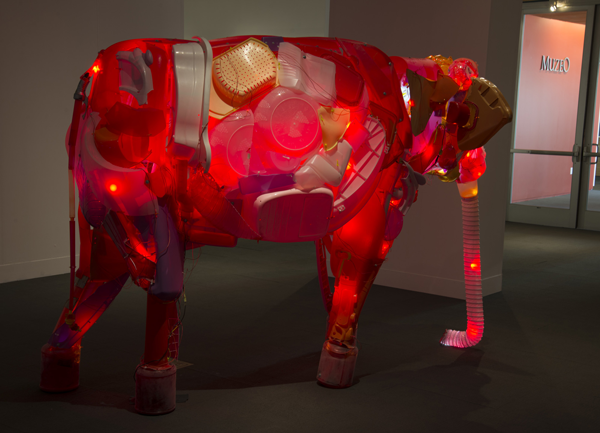
My research leads me to study anatomy, animal behavior, ecology, genetic modification, and farming practices. The seemingly insurmountable problem of plastic pollution in the food chain and in the water supply has led to tonnages of waste, literally oceans of junk.
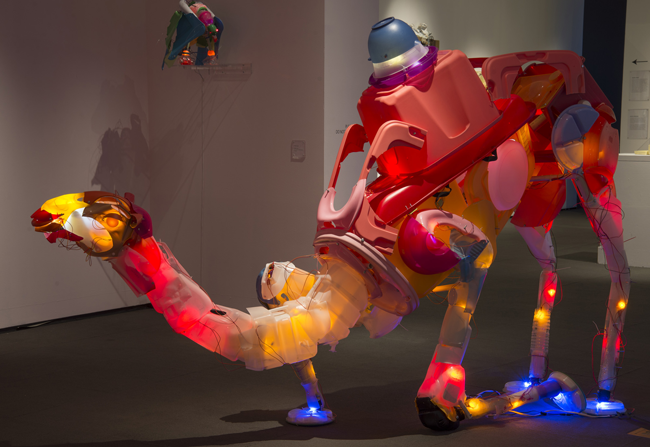
I seek to counter the impact of that garbage on our psyches by making work that offers a kind of solace through aesthetic beauty. At the same time, the anatomical accuracy of these illuminated animals made from trash punctuates the gravity of the ecological problems and contributes disturbing and unsettling qualities to the work. One of the underlying messages is that we may all ultimately be part plastic. My practice is thus a form of activism, asking questions that haven’t yet produced viable solutions, but that attempt to engage viewers of all ages to accept our shared responsibility for the planet.
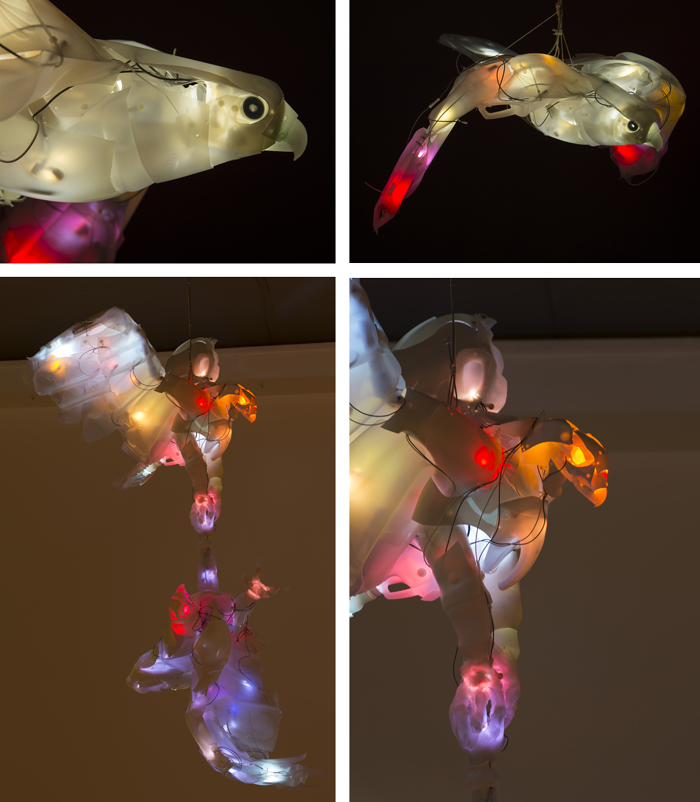
Cynthia Minet is a visual artist based in Los Angeles, CA. Her work has been presented in solo and group exhibitions internationally and nationally including USC Fisher Museum of Art, Los Angeles; Anchorage Museum, Alaska; CDC Museum, Atlanta, Georgia; UC Riverside’s Culver Center for the Arts, California; Museum of Natural History, Los Angeles; Los Angeles International Airport; Huntington Beach Art Center, California, and the Muzeo, Anaheim. International group shows include the Limbus Gallery, Tel Aviv; The New Gallery, Teddy Stadium, Jerusalem; Scala Mata, and Art of the World, Venice, Italy. Minet holds an MFA from San Francisco State University, and is Professor of Studio Art at Moorpark College.